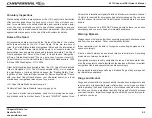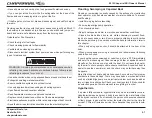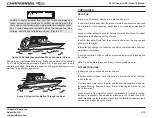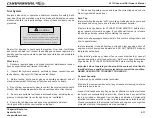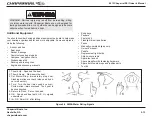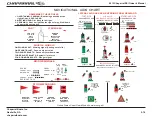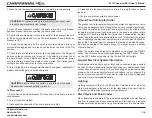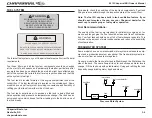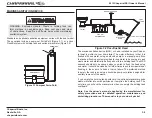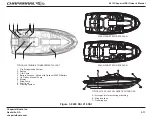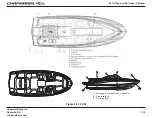
2013 Chaparral SSi Owner’s Manual
Chaparral Boats, Inc.
Nashville, GA
chaparralboats.com
2-12
•Be sure the fi ll pipe is securely mounted, grounded and located where
spilled fuel is directed overboard. Dry and cracked or soft and mushy fuel
fi ll hoses should be replaced immediately.
•If your boat is equipped with bilge blowers, ensure they are working
properly.
•Ensure cooking appliances on board are secured and operate properly.
Refer to the appliance owner’s manual.
•Ensure fl ammable items are stowed safely and cannot contact cooking
appliances or hot engine parts.
•Ensure fi re extinguishers are USCG-approved and in good working or-
der (i.e., gauges register and nozzles are clear).
•Repair all bare wires and loose electrical connections that might cause
a short in your boat’s electrical system and start a fi re.
•Do not store disposable propane cylinders or charcoal lighting fl uid on
board the boat.
•When replacing starters or other electrical equipment use only ignition-
protected parts. Do not use automotive parts.
Navigational Aids Chart
The Navigational Aids Chart (located at the end of this section) contains
information about various signals, buoys, and warnings.Chaparral rec-
ommends you participate in a safe boating course to learn more about
navigating your boat safely.
WATER SPORTS
Water skiing and other water sports, such as kneeboarding and riding on
infl atable towable devices, require an increased safety awareness by all
the people involved.
Important: Remember that three people — not two — are required
for safe water skiing: the boat operator, the skier, and an observer
on the boat facing the skier. The observer relays signals from the
skier to the operator. The operator can therefore give full attention
to the operation of the boat and the waters ahead.
Figure 2.6 shows a set of hand signals recommended by the American
Water Ski Association (AWSA). The skier, the observer, and the boat op-
erator should know and understand these 7 simple signals.
Following these guidelines helps make water skiing a safe and enjoyable
experience:
1. Water ski only in safe areas away from other boats and swimmers,
out of channels, and in water free of underwater obstructions.
2. Make sure anyone who water skis is a competent swimmer.
3. Be sure the skier is wearing a proper fl otation device. A properly de-
signed ski vest will keep a stunned or unconscious person afl oat.
4. Approach a skier in the water from the lee side, and be certain to stop
your motor before coming close to the skier.
5. Give immediate attention to a fallen skier. He or she is vulnera- ble in
the water alone and is diffi cult to see by other boaters.
For more information about water skiing, Please contact the American
Water Ski Association, 799 Overlook Drive, Winter Haven, Florida 33884
(1-800-533-2972) or www.usawaterski.org.
WARNING: Death or serious poisoning can result from expo-
sure to carbon monoxide from engine exhaust. Turn off gasoline-
powered generators that exhaust at or near the water level when
the swim platform on the stern is in use. Swimmers should not
enter the cavity beneath the swim platform.






